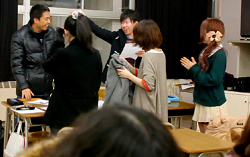Functional and dysfunctional conflict
Whether you believe conflict is bad, inevitable, positive, or necessary, it becomes crucial to recognize that groups will inevitably face two types of conflict: functional and dysfunctional (Robbins, 2003; Jex & Britt, 2014).
Functional conflict
Functional conflict is healthy for a group because it supports the group’s goals and improves performance (Jex & Britt, 2014). For example, team members engage in functional conflict when they discuss how to complete tasks and improve processes, use critical thinking to question their decisions, and work together to drive necessary changes.
Dysfunctional conflict
Dysfunctional conflict is unhealthy because it can hinder individual and group performance (Jex & Britt, 2014). Dysfunctional conflict focuses on individuals as the problem, while functional conflict focuses on tasks and processes. Sources of dysfunctional conflict include
- Distorted communication
- Rumors
- Gossip
- Secrets
- Intentional acts to disrupt the team
- Inappropriate displays of strong emotions, like anger and frustration


![Communication is a process of negotiating to create shared understanding [Image: CoPilot] Communication is a process of negotiating to create shared understanding [Image: CoPilot]](/images/Images/a_man_and_a_woman_creating_shared_meaning_through_communication500.png)



![Your brain can keep growing, adapting, and learning at any age, if you are willing to put in the effort [Image: Copilot]](/images/Images/best-years-for-adult-brain300.png)
